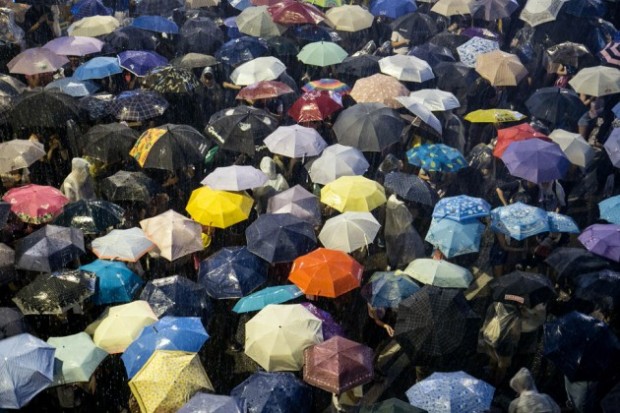
A colorful “invasion” of Hong Kong that formerly brighten the days of passers-by has been suppressed by government workers taking orders to keep public areas free from street art. In the wake of Hong Kong’s “Occupy Central”, government should embrace the upcoming cultural movement in accepting and celebrating more unconventional form of art such as the paintings on the walls that are repeatedly being painted over all over the city.
It all started on Sept. 26, when hundreds of students gathered in a courtyard in Central Hong Kong, demanding an end to Chinese oppression and control. China’s modern history with Hong Kong has been complicated, to say the least. For more than 150 years, Hong Kong belonged to Britain. Then in 1997 Britain handed the thriving metropolis back to China in a political deal called “One Country, Two Systems,” which allowed Hong Kong to maintain some of the freedoms and independence mainland Chinese people do not have, such as freedom of expression, press and the right to assemble.
But this summer China started to backpedal. It announced to Hong Kong that those elections could proceed only if the Chinese government selected all the candidates. To the people of Hong Kong, that meant they wouldn’t have much control over their own government after all.
Soon after this news, the students hit the streets, and thousands from Hong Kong rushed to join them in the days that followed. These protesters have come from all over China and all hold different, yet similar ideologies, all demanding seize of government suppression. Most recently the Umbrella Revolution has focused on spreading their message through various forms of street art. This street art is called the “invasion” and has been popping up all over Hong Kong. The government time and time again paints over these murals and arrests, tear gasses, or punishes any one involved. Such self expression that is celebrated and accepted in most modern societies is a major point of content in Hong Kong. Protestors against the removal of these murals have invaded the city under the Umbrella Revolution and their fight continues even now. It seems as though this will be a long road until street art or any form of true self expression prevails against China’s stifling government.

“Sometimes Hong Kong feels like a non-fun zone,” said student-citizen Every-Wortman. “Some restrictions make sense, because there are so many people here. But I hope slowly government can be not to be too strict on certain rules, and it will continue to change as people fight for public space and expression in said spaces.”
To understand how the protests have escalated to this point, click this link, so as we watch the conflict develop.



